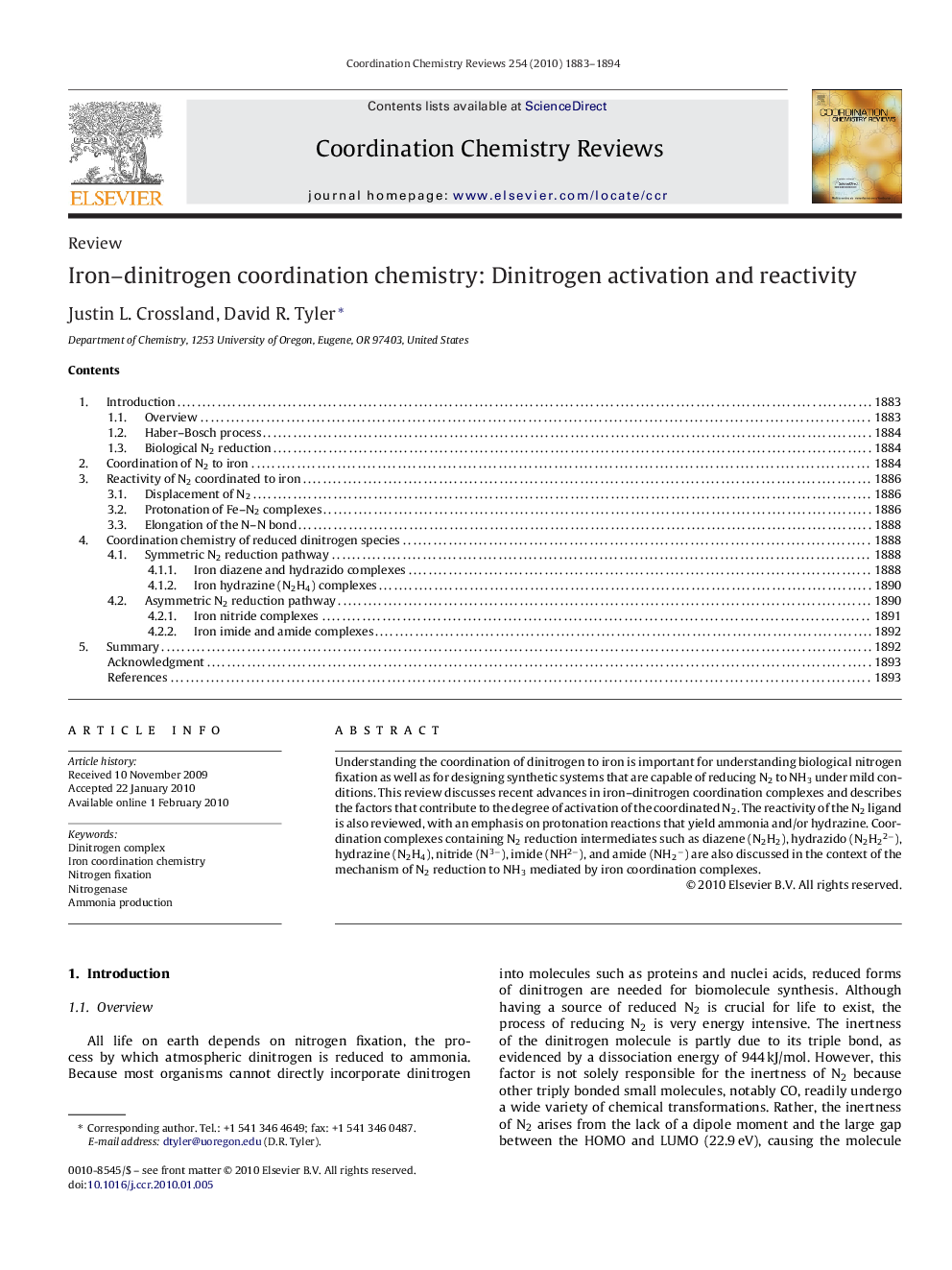| Article ID | Journal | Published Year | Pages | File Type |
|---|---|---|---|---|
| 1300627 | Coordination Chemistry Reviews | 2010 | 12 Pages |
Understanding the coordination of dinitrogen to iron is important for understanding biological nitrogen fixation as well as for designing synthetic systems that are capable of reducing N2 to NH3 under mild conditions. This review discusses recent advances in iron–dinitrogen coordination complexes and describes the factors that contribute to the degree of activation of the coordinated N2. The reactivity of the N2 ligand is also reviewed, with an emphasis on protonation reactions that yield ammonia and/or hydrazine. Coordination complexes containing N2 reduction intermediates such as diazene (N2H2), hydrazido (N2H22−), hydrazine (N2H4), nitride (N3−), imide (NH2−), and amide (NH2−) are also discussed in the context of the mechanism of N2 reduction to NH3 mediated by iron coordination complexes.
